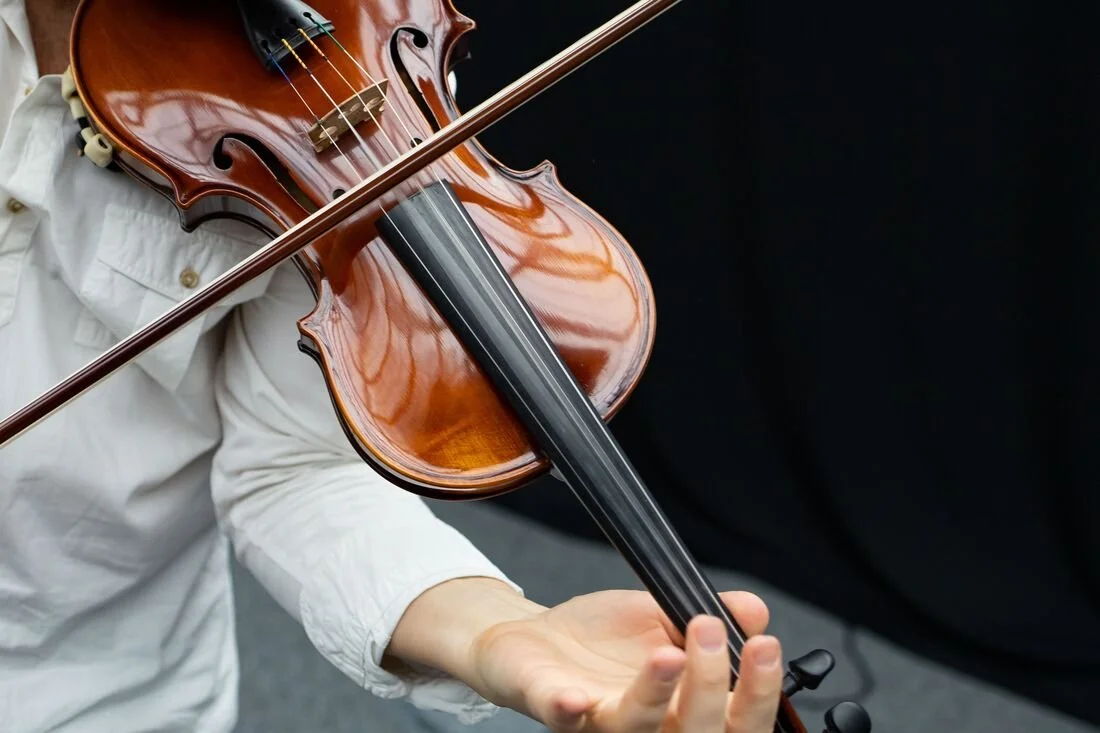Most important things for a beginner violinist in Los Angeles
Ever dream of conjuring breathtaking melodies from a wooden heart?
That's the magic of the violin—a captivating journey filled with soaring highs and humbling plateaus.
Before you serenade the world with your violin masterpieces, there's an essential first step: conquering the fundamentals. This might sound daunting, like scaling Mount Everest in your socks, but fear not! Nail the basics, then blast off on your musical adventure!
It's like building a magnificent castle; master these basics, and your music will stand tall and proud.
Let's dive into the fascinating world of violin fundamentals, making it manageable and enjoyable! Bite-sized lessons, practical tips, and fun exercises: master the fiddle from curious beginner to confident pro! So, grab your violin, take a deep breath, and climb this musical mountain together!
It might feel like deciphering a secret language, but fear not! This guide will be your trusty decoder ring, unlocking the secrets of violin mastery step-by-step.
Fear not, aspiring maestros! This comprehensive guide will illuminate the path from your first tentative pluck to confident, expressive artistry.
Are you ready to unlock the magic of the violin? We'll be your musical guides, sharing the secrets to violin mastery in a way that's easy to understand and fun to practice.
No fancy terms, just straightforward tips, targeted exercises, and golden nuggets of wisdom we've gathered from years of teaching violin lovers in Burbank and Los Angeles. So grab your violin, and let's make some music!
Building a Solid Foundation: Posture and Arm Levels
Imagine a sculptor Carefully shaping a masterpiece out of raw clay. Your posture and arm positions are your chisel and mallet, molding the sounds you conjure from the violin's strings. I am a posture perfectionist with my Los Angeles and Burbank beginner students. Mastering this foundational element is paramount to future success.
Here's the recipe for perfect violin posture:
Stand tall yet relaxed. Imagine a string pulling you upward from your crown. Shoulders down, back straight, but not rigid. Think of yourself as a strong, graceful tree, not a stiff board.
Engage your core: A firm core provides stability and allows for effortless shifting. Imagine pulling your belly button back towards your spine without clenching.
Balance is key. Distribute your weight evenly on both feet, slightly wider than shoulder-width apart. This creates a stable platform for intricate bow movements.
Let's focus on the arms once your posture is a pillar of stability. Think of them as two dancers gracefully partnering across the strings. Their heights vary depending on the string you're playing:
G and D strings: Both arms are slightly lowered, and the elbows are tucked close to your body. This allows for finger flexibility and accurate intonation on the higher strings.
A and E strings: Arms rise slightly, with the left arm extending more for reach. This ensures proper clearance for bow movement and prevents fatigue.
Mastering these subtle shifts becomes second nature with dedicated practice. Don't be afraid to use visual aids! I often recommend marking arm levels on the violin with tape for my Burbank and Los Angeles students.
Remember, consistency is vital; build muscle memory for these positions early on, and you'll reap the rewards later with effortless playing.
Finding Your Voice: Intonation and Finger Placement
Now that your violin and body are in perfect harmony, it's time to focus on the language of music itself: intonation. Imagine each note on the fingerboard as a stepping stone on a path to musical expression. Hitting them precisely creates melodies that sing, while missed notes are jarring bumps in the journey.
This is where finger placement comes in—your fingertips become the delicate map readers navigating this sonic terrain. Fretting accurately takes time and practice, but there are ways to accelerate your progress:
Scales and arpeggios: These exercises are the alphabet of music, training your fingers to move with precision and fluidity. Start slow, focus on precise finger placement, and gradually increase your tempo as your muscle memory solidifies.
Fingerboard tapes: As mentioned earlier, these visual guides can be invaluable for beginners. They provide a physical reference point for finger placement, especially helpful for navigating the trickier, higher positions.
Double stops and chords: Once you've conquered single notes, venture into the world of double stops and chords. Playing two or more notes simultaneously demands precise finger coordination, further refining your intonation skills.
Remember, practice makes progress, not perfection. When you hit a sour note, don't let it define you. Keep practicing, be proud of your progress, and your singing will be as beautiful as a spring rose.
The bow is the violin's soul, its voice given breath by your right hand. Playing it right takes practice, like writing with a brush. Every touch tells a story, giving the music its soul and feeling.
Los Angeles and Burbank beginners often need help with bow direction and maintaining a straight bow stroke. Here are some tips to tame the beast:Mirror, mirror on the wall: Practice in front of a mirror! This allows you to visually monitor your bow's trajectory and ensure it remains parallel to the fingerboard and bridge. Aim for a consistent, fluid motion, avoiding jerky or uneven strokes.
The weight game: Imagine the bow as a feather, gently resting on the strings. Apply just enough pressure to produce a clear, resonant tone. Too much pressure creates harsh, scratchy sounds, while too little results.


